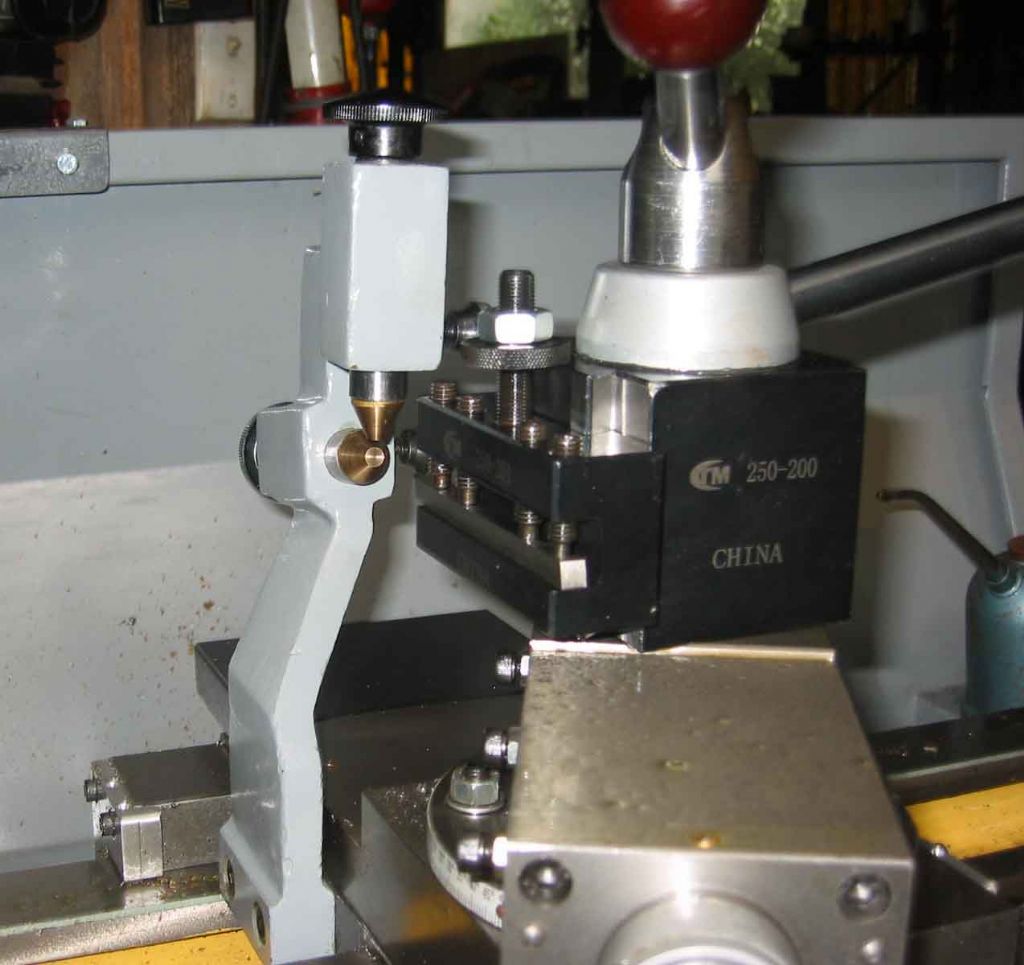No, the fingers should not lead the tool if possible, especially on long slender items.
Lets be engineers and look at the forces involved.
Firstly lets ignore any rotatational translation- because it is very small and can be ignored.
Second lets assume the tool generates a force in a single vertical plane for the purposes of this discussion. It doesn’t of course, and there is a vector that can be defined in 2 axes. However that force is taken on the headstock.
So, if the tool leads the ifngers, there is a leverage (moment) upwards generated by the tool tip whose fulcrum is the fingers, and it is resisted in rotation at the headstock. It can actually distort a long slender item, causing the work to hog or hump at the point of cut..
Likewise if the steady leads the tool, except that now we have an upthrust at the tailstock.
So the ONLY place where a long slender item is not subject to an undesirable deforming force is where there is no leverage generated . And the ONLY palce where there is no moment is when the tool is exactly inline with the fingers., which is exactly how one should set a travelling steady. If it is possible.
In fact cutting a thread is the only place where it is possible, because there is no change in overall dimension/diameter .
As for that “Oh Dear and missing points”. I don’t think so- as I read my post I specically mentioned the business of engraving the fingers and cariages being invited to move. Did I not? Or was that the bit that wasn’t read?
It isn’t a big problem as long as one is aware of it but there is, as always, a way round that, if one is prepared to make a little effort. A set of steel tipped fingers and a dab of grease.
May I commend it to you, especailly as most people don’t cut a thread to full depth from virgin metal in one pass, it which case it hardly matters whether the tool leads or trails, its still going to pick up a thread if the tip is soft.
More generally, the fingers on the steadies on my Chinese lathe are not the most wonderful of items and at the shows I have seen other steadies which were not too great. I made a new set of fingers with screw in tips, so I have hard and soft tips.
These days I do very little screwcutting – what counts for precise involves selecting the picth on the gearbox, and running a shallow groove down a job just to guide the die on a die guide in the tailstock. However, when it did matter doing the Quorn and the Dore Westbury and various boring heads which had proper calibrated feedscrews, then hard tips and proper placing of the steady were the answer to accurately sized threads with minimal backlash.

Edited By mgj on 11/03/2011 18:14:15
mgj.








